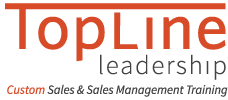Faster sales pitches won’t lead to faster sales. The key to speeding up the sales process and closing more deals faster, ironically, is to slow down your sales conversations and get in sync with your customer’s buying process. Here are 5 essential selling skills that can help you slow down to sell faster:
Get the customer to move backward in their buying process
Have you ever had a great first meeting, and then nothing happened afterward?
According to recent research, as much as 60% of a buyer’s process is complete before the customer even contacts possible suppliers. Customers identify their own needs internally. The trouble this causes for salespeople is that customers think they did a good job of identifying their own needs, but in actuality, customers likely did a lousy job.
This means that customer needs are poorly defined at the very moment when they start asking you questions about your product or service. This is the point when many salespeople mistakenly “take the bait” and start telling the customer about how great their product or service is.
This is an example of a common mistake I see salespeople make – what I call “the itch to pitch” and/or “show up and throw up.” Not good.
The customer, after hearing how great you think your product is, typically asks you for a “ballpark” quote. Then nothing happens after the meeting. Why? Because the customers’ poorly defined need is not big enough to justify the ballpark price you just quoted.
The solution is to get the customer to move backward in their buying process. Say, “I’d be happy to show you our capabilities. May I ask you a few questions first so I can determine which ones will solve your problems?”
Find out where the customer is in their buying process
If the prospect initiates contact with you, the first thing you have to do is find out where they are in their buying process. The later in the buying process you enter, the lower your chances of success. To identify where a customer is, simply ask, “What steps have you taken thus far in regards to making this decision?”
In my new audiobook, “Slow Down, Sell Faster!, I describe the eight steps of a buying process, and the questions that customers typically ask at each step.
Probe for a 2nd customer need
The reason customers first contact you is that they think they may have a need. Obviously, you want to thoroughly probe this first need.
Trouble is, sometimes that 1st need – even when it is well-defined – is not perceived by the customer as big enough for them to go through all the hassles of changing suppliers. So, once the customer’s first need has been properly probed, you want to ask:
“Other than this issue, is there anything else about your current supplier that you would like to see them improve?”
Your goal here is to build your buyer’s discontent. This is the essence of consultative selling – helping customers to understand those problems that they didn’t previously recognize. When the customer perceives that the value of a solution is significantly greater than its cost, customers will usually decide to move forward to research their buying criteria and compare options.
Influence the buying criteria to include your company’s differentiators
Pam is a salesperson for an office equipment company that recently responded to an RFP issued by a large medical center who needed to buy 500 computer monitors. When Pam read the RFP, it was apparent that the prospect was shopping primarily on price and features, and she suspected the customer did not recognize all their needs. Pam persuaded the prospect to agree to meet with her.
Pam knew that her company had unique capabilities that the medical center could benefit from, one of which was an eco-friendly recycling program for all those old computer monitors that the medical center was planning to replace.
But during the meeting, Pam didn’t just launch into a pitch about her company’s unique capabilities. Instead, she asked questions that helped the customer to recognize that they had problems and needs they hadn’t previously considered. Pam asked her prospect, “How do you plan to dispose of the 500 old monitors, and is that process consistent with the eco-friendly policy that appears on your website?” The customer realized this was a need that they hadn’t previously recognized. The customer re-wrote the RFP with this added requirement and Pam won the deal.
The key for salespeople is this: What is it that your customer is not yet thinking about? How can you connect your company’s strengths to those needs?
Schedule follow-up after your demo
Have you ever had a customer that you thought would become a sure-thing sale suddenly “go silent” on you, and not return your phone calls?
When a customer is scheduling demos from different suppliers their focus is on answering the question, “Which option is our best choice?” But after evaluating the different demos, the buyer wonders, “What are the risks if we move forward with our preferred supplier?” Rarely do decision-makers move directly to “let’s close this deal.”
You can’t resolve customer fear if the customer doesn’t return your phone calls. To do a better job of overcoming customer fear in 2020, resolve now to schedule a follow-up meeting after each and every demo. Anticipate the possibility of buyer fear and make a plan to maintain communication with the customer after you deliver your demo. Here are a few ideas for the purposes of this post-demo meeting:
- Tour of your company facilities
- Schedule a web meeting to introduce the customer to a senior-level person from your company
- Schedule a meeting to review the specifics of your implementation plan
If you found these ideas helpful, pick up a copy of my book, “Slow Down, Sell Faster!” Just released: a book-length audiobook for “Slow Down, Sell Faster!” has been published by Amazon’s Audible. Order your copy today!


